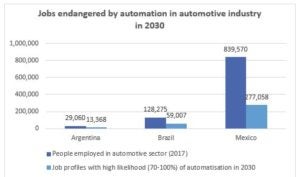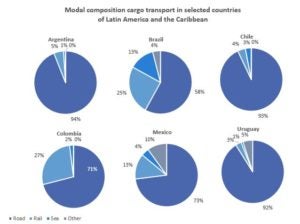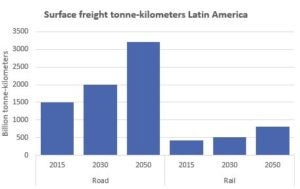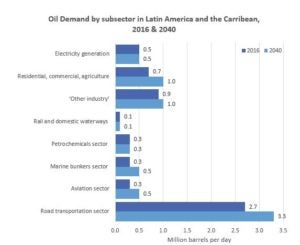The transport sector is facing unprecedented changes. New mobility solutions and services promise a transformative effect of the traditional mobility landscape. The outcome of the transformative change in the mobility sector is still largely uncertain. However, there are major trends observable, which raise far-reaching questions. In the following we dive deeper into three of the questions that will have to be addressed rather too early than too late.
-
Are the automotive workers at risk?
There is no industry that is not affected by the creeping fear. Automation anxiety and the fear of mass unemployment caused by the replacement of humans by robots knows no borders. The mobility sector and above all the automotive industry is not immune to this fear.
In Latin American many global automobile companies have major automotive assembly plants and industrial units, particularly in Argentina, Brazil and Mexico. In these countries the automotive industry accounts for a significant proportion of the GDP. The automotive industry represents 4 % of the national GDP in Brazil in 2015 (ANFAVEA, 2019) and 3.7 % in Mexico in 2017 (INEGI, 2018). This goes along with a multitude of well-paid jobs. In Mexico one out of every fifth job in the manufacturing industry is created by the automotive industry (INEGI, 2018). Industry representatives, unions and factory workers could cause resentment against changes in these countries.
The digital transformation of production processes threatens numerous factory jobs in the automotive industry. An analysis of the occupational profiles within the automotive industry (Kelkar, Esposito et al., 2017) according to the method of the The Future of Employment study by Carl Benedikt Frey and Michael A. Osborne show alarming numbers. Digitalization threatens to replace many repetitive activities that are carried out in structured settings. According to this analysis, 46 percent of employees of the automotive industry today work in occupations with high likelihood of automation in 2030. The numbers do not represent predictions of job loss. They represent the amount of jobs that are automatable from a technological capabilities point of view. The actual extent and pace of computerization will depend on several additional factors which were left unaccounted for in the study. Nevertheless, it is worthwhile to consider the risk and the potential social implications, to develop measures that help to assist the transition.

-
Will mobility constrained groups enjoy new freedom of movement?
The transformation of the mobility sector and notably the automation of vehicles goes hand in hand with a great promise. The freedom of mobility will be brought to many people left behind by the current mobility system. Several social groups are constrained regarding their access to mobility in the current system. People with disability, elderlies and adolescents are examples of these mobility constrained groups. A new mobility landscape with ubiquitous automated vehicles promises new mobility services, which imply greater mobility and hence more independence for these people. Autonomous vehicles will be able to offer seamless door-to-door transportation without requiring the capacity of being able to operate a private transport mode. According to the industry these mobility services will be provided at significantly lower costs.
The practical effects in the lives of the concerned people can be unprecedented. Mobility constraints represent a significant barrier for e.g. employment or access to health care and clearly hinders the release of yet unseen potential. The degree of impact in the region could be immense. By the year 2030 there will be approximately 105,000,000 adolescents, 8,800,000 elderlies and 4,500,00 people with disability (Cepal, 2018) in LAC that could potentially benefit from new mobility services and regain a big part of their personal freedom.

-
Will the countries get a grip on the CO2 emissions from freight movement?
Freight transport volume keeps growing and growing, transport distances increase and accordingly does the carbon footprint of the freight transport. The future prospect for freight transport does not foresee a turn away from this development. The silver bullet of private transportation, switching the powertrain to electric engines, does not apply for the road freight transportation because of the required range for long distance road transport. While the outlook for private passenger cars seems to be clear, the big picture for the freight transport remains uncertain.
The situation of freight movement is especially challenging for Latin America. The dominant mean of transportation in freight in the region is road-transport. Diesel-fueled duty vehicles transport the large part of freight goods in the region. Moving more goods by rail, which would be a more carbon-efficient alternative, is difficult due to the often-insufficient infrastructure across the countries (Viscidi, L., O’Connor, R., 2017).

In many countries of the world the oil use of passenger cars has begun to stabilize or even to decline. However, this is not the case for road freight vehicles. An increase of the economic welfare is closely linked to road freight activity. Latin America has a substantial and fast-growing middle class with increasing purchasing power. A strong increase in surface freight tonne-kilometers for the region is expected.

These circumstances indicate a drastic increase in CO2 emission from road freight activity. Worldwide Trucks are a rapidly growing source of global oil demand and they will surpass passenger cars as the major source of oil consumption. For the region it will become one of the greatest policy challenges to shift to low-carbon freight transportation.

It becomes clear that the future of mobility will bring challenges as well as opportunities to Latin America and the Caribbean. This overview on what the future may bring represents an extract of IDB’s dealing with future mobility scenarios in Latin America and the Caribbean. Our research will be expanded in the next Development in the Americas 2020 report. We will keep you posted!


Leave a Reply